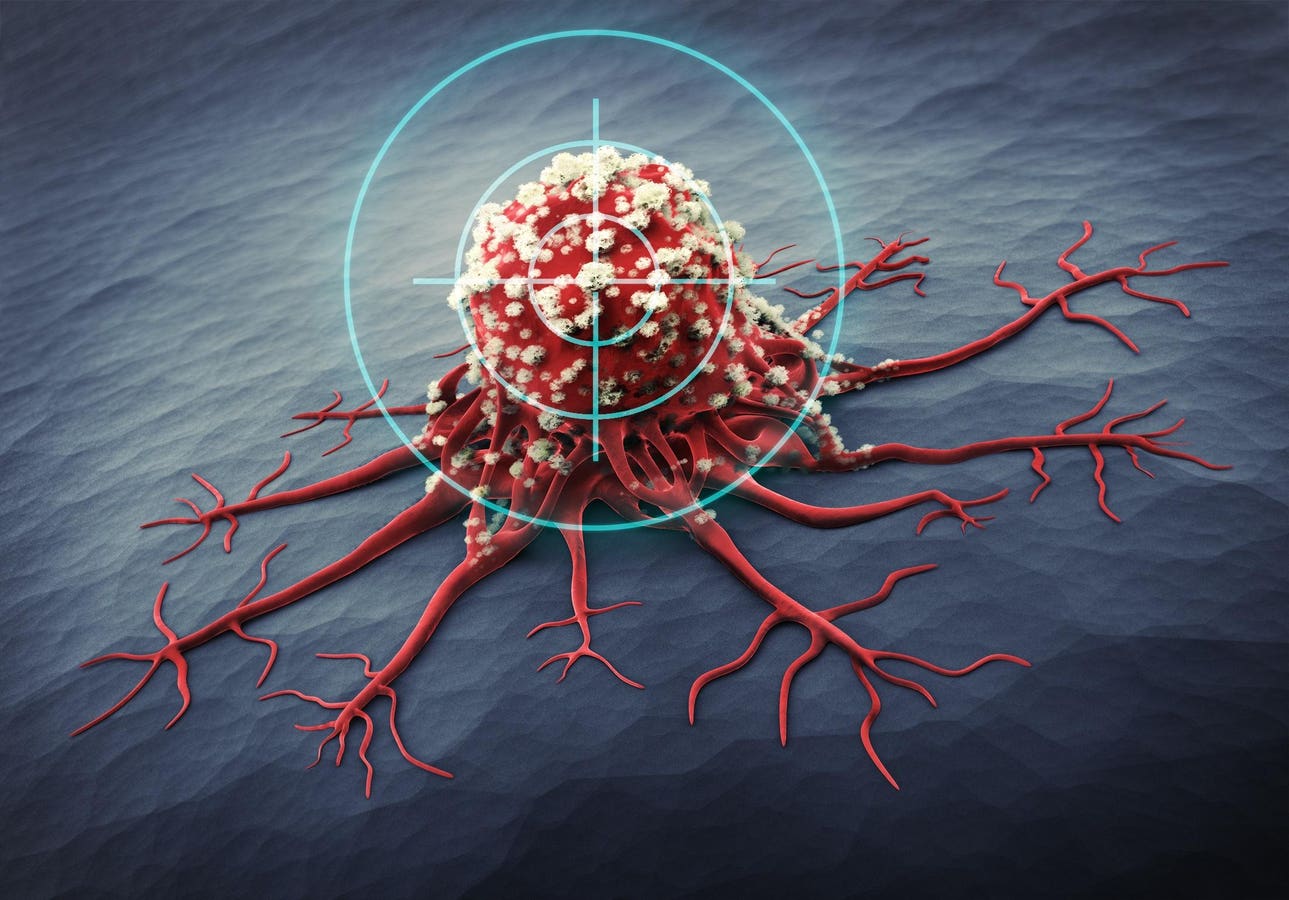Health
How Checkpoint Inhibitors Work in Cancer Immunotherapy

3D rendering of a cancer cell – medical illustration
Skin cancer, lung cancer, lymphoma – although these cancers affect different parts of the body, they can all be treated with one of the newest therapies medicine has to offer: checkpoint inhibitors. This family of cancer drugs can treat more than 25 different types of advanced tumors and can be combined with other cancer treatments such as chemotherapy and radiation.
Perhaps most fascinating is how this therapy works. With each intravenous infusion, antibodies flow into the bloodstream. They block proteins called immune checkpoints and restore the immune cell’s innate ability to kill tumors. This article outlines how both immune checkpoints and checkpoint inhibitors work. Although complicated at first glance, this process is critical to understanding how inhibitors can fight tumors.
Balance in the immune system
There is a natural balance in the immune system. While it must be activated to retaliate against threats, it is also necessary to keep the immune system in check to prevent overreaction and allow the immune system to recognize new problems as they arise. This means that the immune system can send signals to startle And slow down immune cells.
Activate T cell signals
The immune system uses a fleet of different immune cells to counter threats. One group, known as T cells, plays an important role by carrying out targeted attacks.
With the help of other immune cells, T cells undergo a process called T cell activation. This process relies on two cell signals – the main signal from the T cell receptor and a second crucial signal from a costimulatory receptor – to trigger a cascade of cell changes. Through activation, the cells learn to recognize specific proteins on tumors and act accordingly; for helper T cells, this means recruiting other cells to attack. Killer T cells, on the other hand, can release cytotoxic chemicals to eliminate their targets. Activation also encourages the cell to multiply and survive.
Checkpoints stop T cell signals
To counteract overactive immune cells, the immune system relies on proteins called immune checkpoints to slow down cellular activity.
Checkpoint proteins are found on the surface of various cells, including immune T cells. The protein interacts with a partner receptor on another cell and begins to change shape. The change produces inhibitory chemicals in the T cells – chemicals that disrupt the cascade of signals that T cells need to activate, proliferate and survive.
Not all checkpoint proteins trigger the same signaling chain reaction. Let’s look at a checkpoint protein called cytotoxic T cell lymphocyte-4or CTLA-4. This checkpoint protein binds to the costimulatory receptors that normally help activate the T cell. In fact, the checkpoint binds more strongly to the receptors than other proteins. This means that the checkpoint prevents cell activation, both by sending inhibitory signals and by outcompeting other molecules to the costimulatory receptors.
Figure 1 illustrates how this checkpoint disrupts normal T cell activation. After binding to a costimulatory receptor, the CTLA-4 checkpoint is tagged with a phosphate group. The movement of phosphate groups is important. In general, adding a phosphate group activates proteins and turns them ‘on’, while removing a phosphate group ‘turns off’ the protein.
Here the phosphate group attracts an enzyme called SHP-2 to the checkpoint. The enzyme then interrupts signals necessary for T cell activation, such as CD3, by removing phosphate groups from these proteins. As a result, the T cells become less active, produce fewer immune signals and are less involved in immune responses and inflammation. CTLA-4 checkpoints also affect the cell cycle and reduce key activity transcription factors such as activator protein 1 (AP1), nuclear factor of activated T cells (NFAT) and NF-κB, proteins important for T cell activation and function.
Figure 1: CTLA-4 signaling pathway. When CTLA-4 checkpoint proteins bind to costimulatory CD80/86 … [+]
Another well-studied checkpoint pathway involves PD-1, or programmed cell death protein-1. This checkpoint can interact with two partner receptors: programmed cell death ligands 1 and 2, known as PD-L1 and PD-L2. Upon binding, the PD-1 checkpoint receives a phosphate molecule. The phosphate group then attracts enzymes such as SHP-2, which switch off certain signals in the cell. Specifically, SHP-2 reduces the activity of signals from the T cell receptor (TCR) and another molecule called CD28, both of which are important for activating T cells.
Silencing these signals reduces the activation of several pathways in the cell, including ZAP70, RAS, and PI3K, as illustrated in Figure 2. This pathway affects proteins needed to regulate the expression of genes that control the activation and function of T affect cells: NF-κB, AP -1 and NF-AT. The T cell ultimately produces less signaling moleculesdivides less often and has a greater chance of dying.
Figure 2: PD-1 signaling pathway. PD-1 checkpoints interrupt signals that a T cell must activate, … [+]
Cancer cells hijack checkpoints
Activation helps T cells suppress tumors and other dangers. However, cancer cells are vague opponents. They can distort their appearance and sneak past immune cells by hijacking checkpoint proteins. By expressing checkpoint partner receptors such as CD80, PD-L1 or PD-L2 on their cell surface, cancer cells can suppress immune cells that would otherwise retaliate. Essentially, what was once a safety measure for the immune system turns into a vehicle for tumor growth.
Enter Checkpoint Inhibitors
When tumor cells threaten the balance of the immune system, we can tip the balance back in our favor with checkpoint inhibitors. These immunotherapy drugs are designed to remove the restrictions on immune cells. The drug’s antibodies bind to checkpoint proteins before they can interact with their partner receptors. When the checkpoint is blocked, the activation signaling cascade can flow unhindered, allowing the T cell to freely activate and recognize tumors. Figure 3 shows how currently approved checkpoint inhibitors block one of three immune checkpoints: CTLA-4 or partner receptors PD-1 and PD-L1.
Figure 3: Blockade of checkpoint inhibitors. The antibodies used in checkpoint blockades prevent the immune system … [+]
Takeaways
The body can orchestrate cell activity to balance the immune system. However, cancer cells can disrupt this delicate balance by using the immune system’s own mechanisms. In these cases, we can use checkpoint inhibitors to help restore immune system functions and effectively counteract tumors that use immune checkpoints to grow undetected. As research continues to uncover the complexities of checkpoint signaling, new therapies may emerge that could further boost this immune response against even the most resilient cancers.













